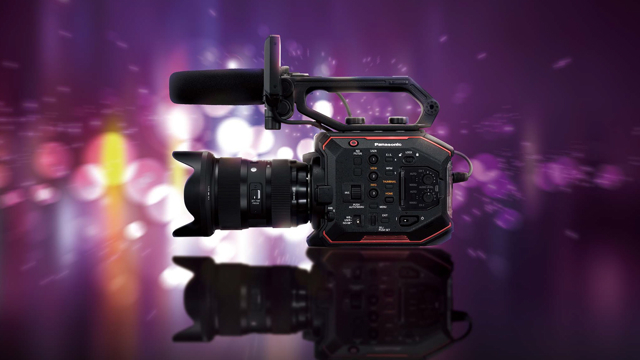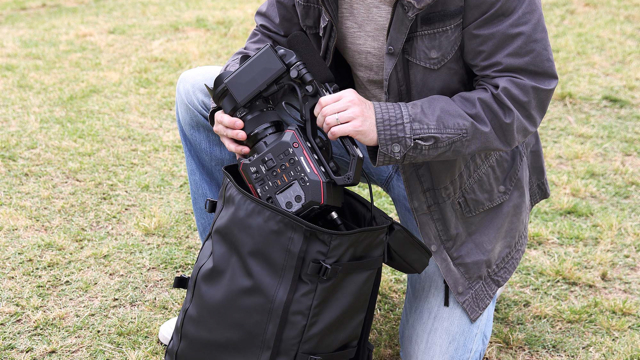Panasonic debuted its 5.7K cinema camera, the AU-EVA1, at Cine Gear Expo in Hollywood last week. The camera, which is meant to fill a gap between the Panasonic Lumix GH5 4K mirrorless camera and the VariCam LT 4K cinema camera, is aimed at handheld shooting, making it ideal for commercials, documentaries and music videos. The compact camera, which can easily fit in a backpack, weighs 2.65 pounds (body only), sports a newly designed sensor and will be priced under $8,000 when it ships in the fall.
According to Panasonic cinema product manager Mitch Gross, because the EVA1’s 5.7K sensor starts at a higher native resolution, it produces “a higher resolving image when down sampled to 4K, UHD, 2K, and even 720p,” with “increased color information.” Via a future firmware upgrade, EVA1 will allow 5.7K RAW output to third-party recorders.
The EVA1 will also include Panasonic’s Dual Native ISO, although it is being tested “to determine final ISO specifications.” Dual Native ISO, found in the VariCam 35, VariCam LT and VariCam Pure, lets the cameras “switch from a standard sensitivity to a high sensitivity without an increase in noise, or other artifacts” and enables cinematographers to use less light on set.
The EVA1 has the colorimetry of the VariCam series as well as V-Log capture for characteristics similar to negative film and V-Gamut capture, which offers a color space larger than film. In addition to its light weight, the EVA1 is compact at 6.69 x 5.31 x 5.23-inches in size, with a removable handgrip. The form factor makes it ideal for handheld shooting as well as mounting on a drone, gimbal rig or jib arm. Accessory manufacturers are working to provide more options for the EVA1.
The EVA1 records to SD cards in numerous formats and compression rates, with up to 10-bit 4:2:2, even in 4K. Users can record up to 400 Mbps and, for high-speed capture, the EVA1 provides 2K up to 240 fps. The camera uses an EF-mount for lenses and Electronic Image Stabilization (EIS) to minimize camera shake and blurring, especially useful for handheld shooting.
The camera also offers control over infrared, for “unique photographic effects and night vision imagery,” as well as dual balanced XLR audio inputs.



No Comments Yet
You can be the first to comment!
Sorry, comments for this entry are closed at this time.